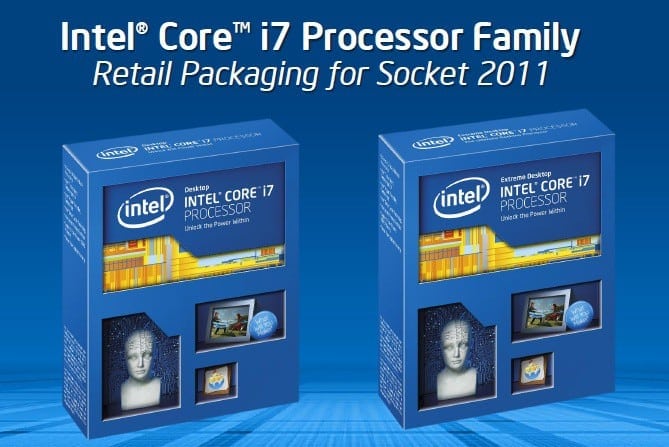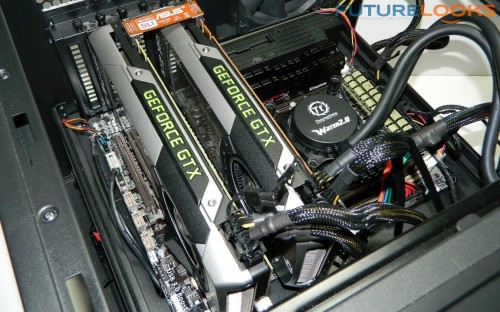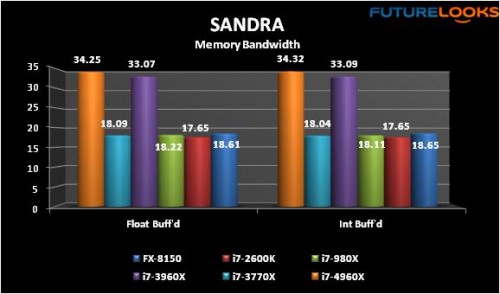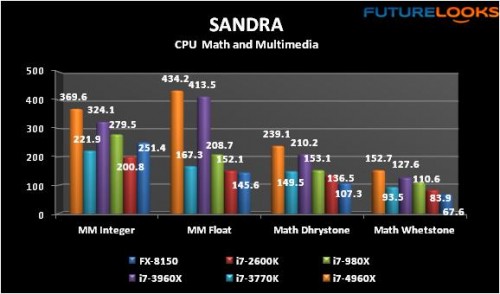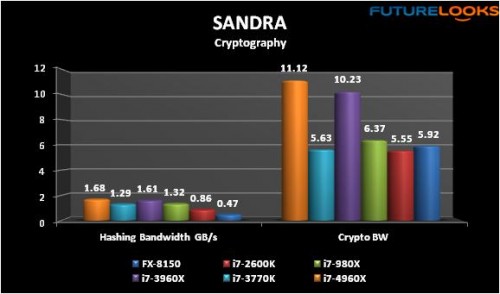Test System
When assembling a test system, I tend to take a more philosophical and practial approach. The CPU is the brain, no arguing that really. But the body, or back bone, of the system is undoubtedly the motherboard. The more intelligent the motherboard, the greater the performance and quality of end user experience. Factors include things such as stability, component support, hardware features, and software.
To more thoroughly break down performance, we’ve pitted Core i7-4960X against some formidable rivals…
Test System 1
- Processor: Core i7-4960X Ivy Bridge-E
- Motherboard: ASUS X79 Sabertooth
- Memory: Kingston HyperX Beast 16GB Quad Channel @ 1866MHz (CAS9)
Test System 2
- Processor: Core i7-3960X Sandy Bridge-E
- Motherboard: Intel DX79SI Extreme
- Memory: Kingston HyperX Genesis 16GB Quad Channel @ 1600MHz (CAS9)
Test System 3
- Processor: Core i7-2600K Sandy Bridge
- Motherboard: ASRock Z68 Extreme 7 Gen 3
- Memory: Kingston HyperX Genesis 4GB Dual Channel @ 1333MHz (CAS9)
Test System 4
- Processor: Core i7-980X Gulftown
- Motherboard: ASUS Rampage III Black Edition (X58)
- Memory: Patriot Memory Division 2 12GB Triple Channel @ 1333MHz (CAS9)
Test System 5
- Processor: AMD FX-8150 Bulldozer
- Motherboard: GIGABYTE GA-990FXA-UD5
- Memory: Patriot Memory Division II 4GB 1866MHz (CAS9)
Shared Components:
- Graphics: 2 x NVIDIA GTX 780 SLI
- Power: Rosewill Tachyon 1000 Watt Platinum
Before using any Ivy Bridge-E processor, users are going to have to update the BIOS on their Intel X79 based motherboards and this will more than likely be everyone if you purchased that board when it first came out. The ASUS Sabertooth X79 needed a quick update which I recommend if you tend to need access to the BIOS. Many of the updates like the ones mentioned in the Z87 Round Up tend to make the BIOS more efficient. Let’s get to testing.
Overclocking Ivy Bridge Extreme – Practice Required
The learning curve for Ivy Bridge Extreme adds a third level of difficulty. With patience and offset voltage (or manual voltage depending on your board), I was able to get the Core i7-4960X up to 4.7GHz before heat was just insanely unmanageable using the Thermaltake Water 2.0 Extreme liquid cooling system. Keep in mind that I’m not using a custom liquid cooling system, but one you can purchase right off the shelf, albeit one of the better ones.
If you need more GHz, you’ll definitely need to invest in triple 120 radiators to get just the CPU to its MAX. Personally, I’m perfectly content with 4.5GHz as it’s just the right sweet spot for performance and stability.
Benchmark Setup
Most of the benchmarks are aimed at testing the CPU only and they include SANDRA, 7-Zip, H.264 Graysky, and CineBench R11.5. However, the CPU influences the PCIE bus too so I followed up with 3DMark 11 and Metro: Last Light. Plus it gave me an excuse to enjoy some games maximum settings, often with NVIDIA 3D Vision 2 on. Let’s get down to it!
SANDRA – Cryptography, Multi-Core Efficiency, Memory Bandwidth, Mathematical and Multimedia.
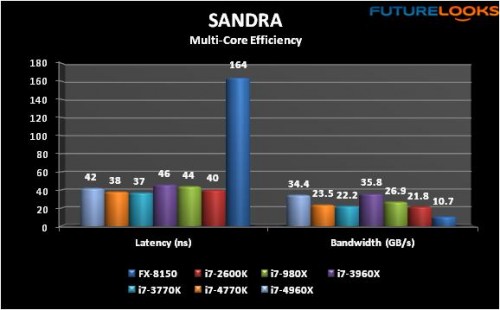
Multi-core efficiency affects things like bandwidth between the L caches, memory controller, and RAM. Higher latencies are never a good thing. However, 4ms isn’t all that high an increase.
Interestingly, going from 1600MHz to 1866MHz didn’t seem to make any enormous gains. I suspect it has something to do with the slightly higher Multi-core latencies. In nano-seconds, 4ms can translate in to a lot of bandwidth and execution. Since we aren’t really using a lot of desktop apps that need anything more, I’ll take the 34 GB/s.
The increase in GB/s is right on par with the processor change from the Core i7-3960X. Multimedia benefits from the cores and threads as always. In theory, we should see a noticeable improvement in transcoding, or video encoding. We’ll see with the H.264 benchmark results in a minute.
AES256 + SHA2-512 crypto simulation testing shows a bit of an improvement. Professionals who need extra security will be able to encrypt their data a lot faster. To put it in perspective, the hex cores will take about half the time of the quad cores. Definitely worth it if these are the types of workloads you are experiencing.

